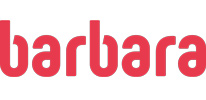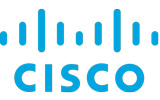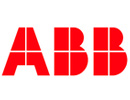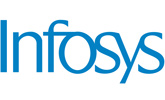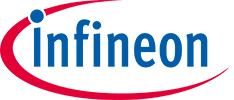World of IoT 
IoT in Energy
Electrical
Application Types (click for more details)Fossil Fuel
Application Types (click for more details)Alternative
Application Types (click for more details)Electrical
The electrical industry leverages IoT to monitor and control power generation and transmission systems using sensors and actuators. IoT applications help drive efficiency, cost control and conservation efforts, optimise assets, manage the grid, and increase safety. The electrical industry also uses smart devices to accurately monitor and analyse energy usage via utilities and customers.
Generation
IoT makes electricity generation more efficient by leveraging sensors and predictive analytics to reduce unplanned downtime, monitor power generation and transmission equipment health, lower maintenance costs and risks.
Storage (Hydro)
IoT sensors and monitoring devices are used in hydropower facilities to provide continuous, high-rate stream data which informs on everything from stability to heat-generation in turbine bearings. They also provide a detailed view on usage, predictive maintenance, and efficiency.
Transmission
IoT can help monitor, detect, and resolve issues with power transmission lines and locate alternative power routes until the problem is resolved and power is restored.
Distribution
Smart meters use IoT to enable transmission and distribution and help electricity generators to manage their energy production process to meet the demand of their end users.
People come to Amplified Engineering to custom their cloud monitoring applications onto our industrial certified Modbus & CAN Bus IOT Gateways.
Our engineers have a wealth of experience in establishing remote cloud monitoring, alerts & downstream control for smart meters, heavy vehicles, mining equipment, inverters, pumps and different types of telemetric installations. This precludes being well-versed with AWS, Azure & MQTT data brokering; and whether it is by using an existing Internet connection or via implementing a cellular backhaul.
However, it is the ability to go beyond the standard features, to build what is truly envisioned by directly dealing with our product developers, that customers find most advantageous. To understand that they are ending up with an IOT Gateway that really is theirs.
Finally, without utilising any additional layers of distributors, we are also proud of our strong lead times – kept around 2 weeks globally on our ex stock builds, even during the pandemic period.
Contact details:
Wayne Shepherdson
wayne@amplified.com.au
Fossil Fuel
IoT is used in the oil and gas and mining industries to minimise risks, monitor pipelines in real time, refine production, maintain health and safety, and lower the environmental impact of drilling and operations.
Extraction
IoT enhances the efficiency of extracting natural resources and minimises risks by using data from sensors and smart devices to avoid dangerous circumstances such as pipeline leakages and oil spills.
Refining
IoT sensors are used in refineries to detect the blends of crude oil incoming, the location of barrels and eliminate unplanned well outages.
Distribution
IoT has helped streamline the supply chain process of oil and gas and mining. IoT sensors placed on refinery equipment collect and analyse data that informs everything from storage and inventory to logistics and delivery.
Alternative
IoT is helping drive the transformation of the renewable energy sector. IoT solutions, sensors and devices are used to monitor and analyse wind turbines, solar cells and hydro equipment for efficiency, performance and to track demand and supply.
Storage (Batteries)
IoT is used in energy storage systems to monitor the temperature, humidity, and environmental conditions of lithium-based batteries, prevent overcharging and discharging, troubleshoot issues and extend battery life.
Monitoring
IoT technology is used to monitor renewable energy sources such as solar panels and wind turbines. IoT sensors and devices monitor these assets for energy output, outages, and equipment failure.
Grid Connection
Smart grids are the next generation of traditional energy networks and systems which have been updated with communications technology and connectivity to embrace renewable energy sources. Data gathered from a network of IoT devices and sensors helps to optimise energy consumption and production.
Wind
IoT is used to improve the performance of wind farms by helping turbines operate with greater efficiency. IoT sensors and devices monitor and regulate the operation of hundreds of wind turbines for structural conditions, safety and potential risk and repair and maintenance.
Solar
IoT helps consumers and business to monitor the use of solar energy. Remote monitoring with IoT provides detailed information on power consumption, helps to balance energy loads, performance in weather conditions and manage supply and demand in the smart grid.
To build a sustainable world, you need to start with mobile connectivity. IoT has the potential to save 8x more energy than it uses. And according to the GSMA, smart energy systems could save businesses a total of £1.3 trillion pounds and cut global carbon emissions by 23%.
But many energy companies lack the time, resources, or expertise to get started with IoT. We’re here to fix that.
We help businesses optimise processes, enhance decision-making, increase revenue, and more through custom-built IoT and mobile connectivity solutions, available across 185 countries and 960 networks.
Founded in 2015, we’re a team of creators and tech lovers who believe things work better connected. We’re UK-based, but hail from all over the world.
Like our namesake—the supercontinent that connected the world before separating into the continents of today—we’re connecting everything.
Contact details:
Dan Cunliffe, Managing Director
sales@pangea-group.net
Things
Transmission Lines
IoT technology used in overhead transmission lines carry out line state monitoring. Devices for transmission lines include servers to control the overall system, IoT gateways and network nodes. These all work together to process transmission and prevent blackouts.
Substations
Examples of IoT solutions used in substations include IoT gateway controllers that provide insights into energy usage and grid performance, smart batteries that calculate energy flow and store power, and relays that automate power systems.
Smart Meters
Smart meters help homes, businesses, and energy suppliers to adjust their energy usage, match consumption and see real-time pricing. Smart meters that monitor natural gas, water, and electricity and that can be remote controlled.
Oil Platforms
IoT sensors for oil and gas extraction and processing and monitoring pipe pressure. Sensors that monitor and detect drilling, machinery conditions and leakages. Robots and drones that enable efficient site exploration, 3D mapping of landfills and drill sites. Sensors for fuel and gas tanks.
Refineries
IoT sensors to monitor and reduce carbon emissions, sensors to monitor oil levels in tanks, monitoring the status of refinery equipment, monitoring conditions of pumps and pipelines, track tanks, trucks and rigs, real-time monitoring to avoid spills, leaks and service interruptions.
Wind Turbines
IoT is used in wind turbines to monitor their performance, reduce inspections, identify, and minimise faults, ensure reliability, reduce the cost of operating the wind farm and therefore reduce the cost of energy. Solutions include monitoring wind speed and direction, 3D wind profiling, vibration, and acceleration.
Solar Cells
IoT sensors and devices that ensure the security of solar panel in rural areas, solutions that monitor solar panel performance in certain light, temperature, dust and in extreme weather conditions, predictive maintenance to avoid outages and power issues.
Hydro Equipment
Smart turbines for rivers and canals that control the flow, stream, and protect against debris. Solutions and sensors that monitor upstream and downstream, flow data, stability of heat-generation in turbine bearings and vibration monitoring.
Nuclear Power Plants
IoT solutions for nuclear power plants include solutions to optimise power generation, improve the value of power plants, monitor, and manage daily inspection and maintenance, optimise fuel combustion, adjusting oxygen levels in boilers and reducing carbon emissions.

